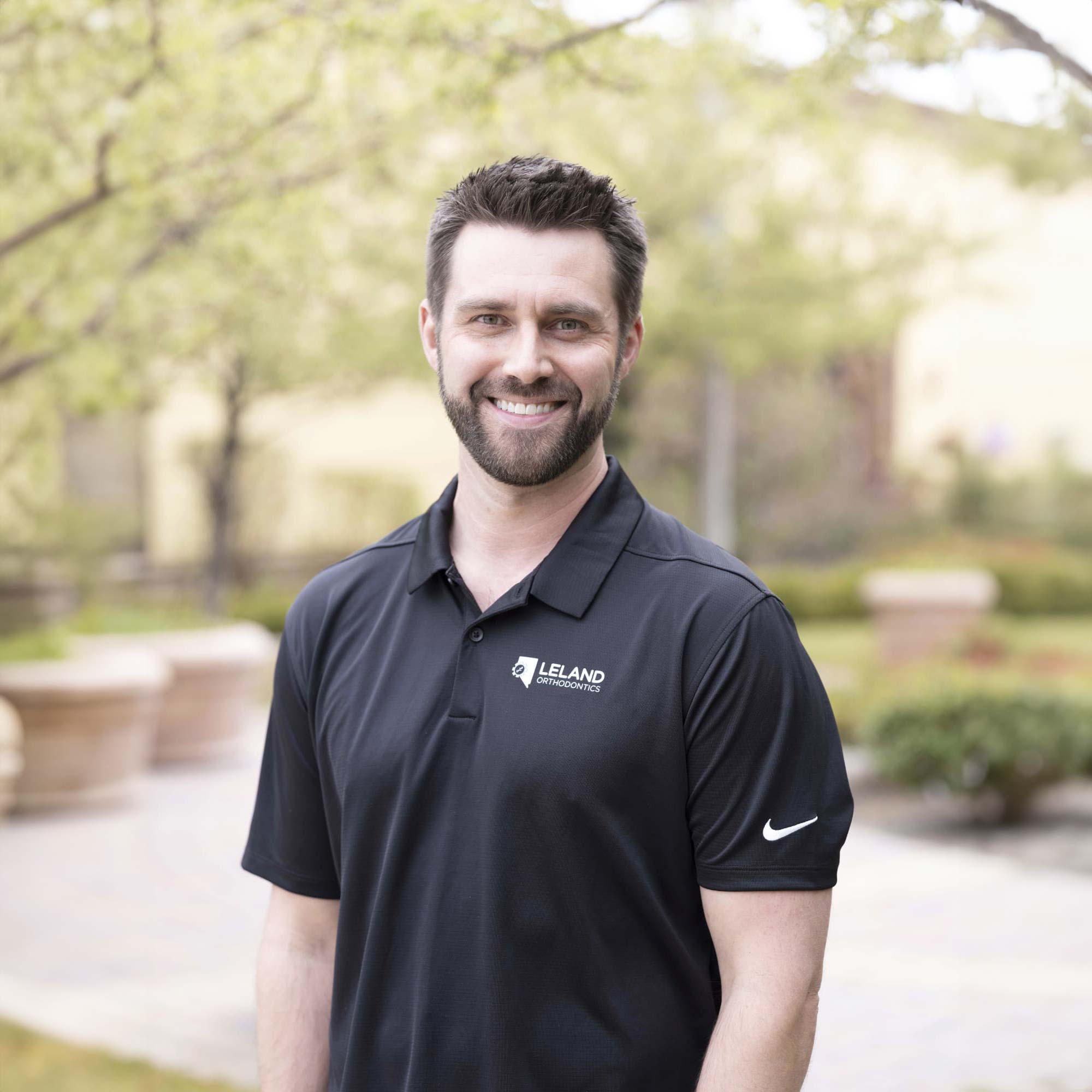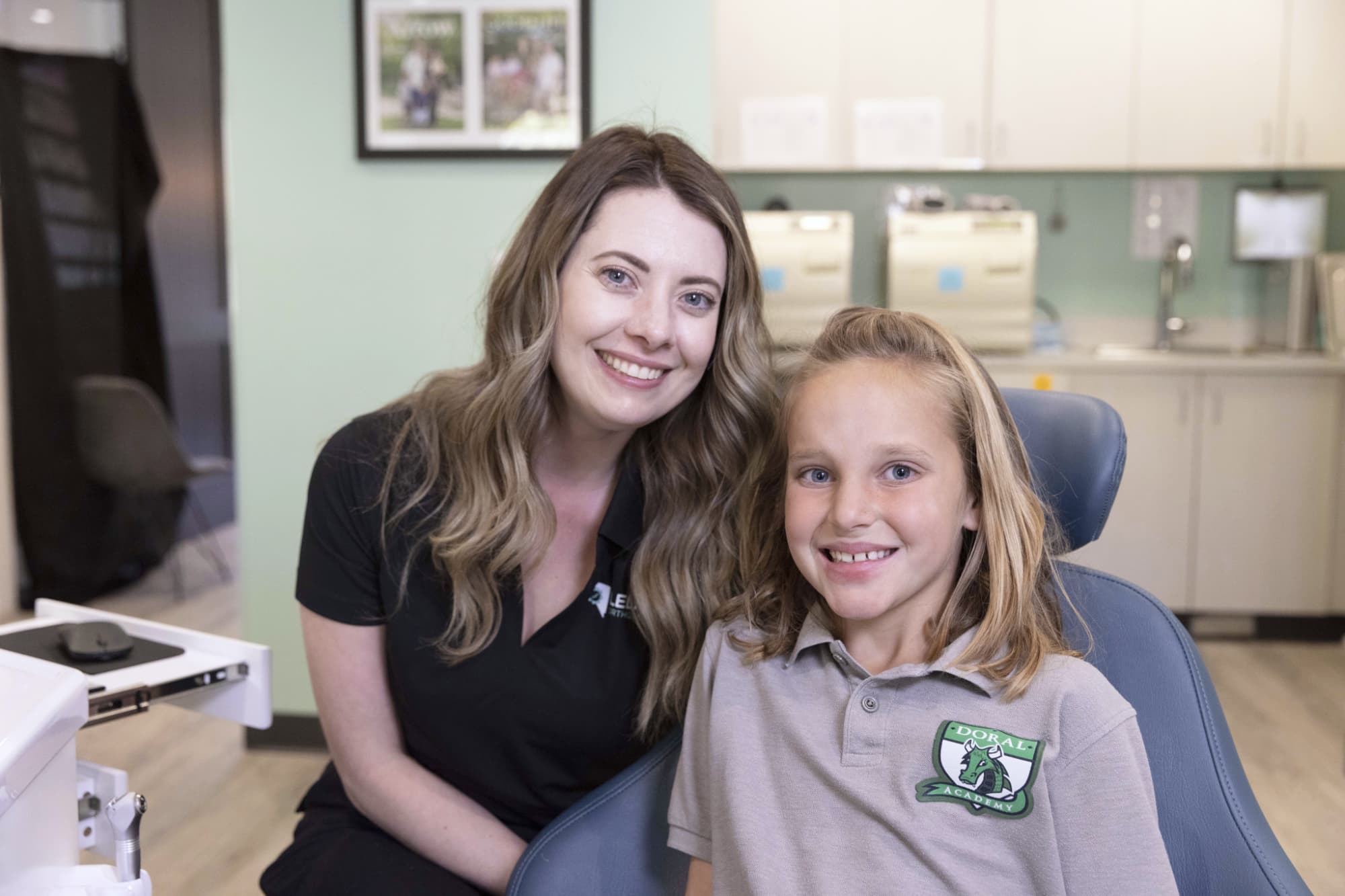Seven years old might seem a bit young to start thinking about orthodontics for your child. After all, they might not even have finished losing their baby teeth! But at Leland Orthodontics we recommend kids around the age of seven come in for their first appointment. This will help Dr. Leland make a proactive plan to help your child’s teeth rather than a reactive solution to problems after they have already happened. Keep reading to learn why your child should see an orthodontist by age 7.
Just because your child comes in for a visit doesn’t always mean that your child will need treatment right away. This visit can give Dr. Leland a baseline to understand what is going on in your child’s development and help him know what areas to keep an eye out for in the future.
There are several developmental landmarks that are good predictors of what will happen to your child’s teeth as they grow. Things like how many teeth they have lost and in what patterns, which teeth have grown in and which ones haven’t, and how their bite will develop. Diagnosing potential problems early can save you and your child a lot of issues later on.
What Dr. Leland Will Evaluate During Your Child’s Appointment
When you step in for your child’s first orthodontist appointment there are a few specific things that Dr. Leland will want to take a look at. Typically the appointment will include an oral evaluation, as well as panoramic X-rays to help him understand everything going on in your child’s oral development currently, and what is below the surface.
Tooth Loss
Dr. Leland will want to make note of how many teeth your child has lost, and which ones. Believe it or not, teeth loss typically happens in a fairly predictable way, so variations from the norm can help him know if there is something to keep an eye on for the future.
Tooth Eruption
Tooth eruption is about how mature teeth are growing back in after losing the baby teeth. If there are gaps where teeth have not grown in after baby tooth loss, this can mean either a tooth is missing or there is crowding or other issues.
Misalignment
When teeth are misaligned this can cause improper bite and gnashing of the teeth that wear down the enamel and cause problems like cavities, sensitivity, and more. Catching misalignment early can help Dr. Leland make a plan that will reduce problems in the future.
Spacing Issues
If your child has large spaces between teeth or there is crowding where too many teeth attempt to grow in the same space, this can be a huge problem. Making note of spacing issues can help diagnose jaw or mouth sizing challenges that Dr. Leland will need to resolve in the future.
Bites
Improper bite structure is a huge factor in the future health of your child. Things like overbite, underbite, crossbite and more can cause many issues later, including serious jaw issues like TMJ. Fixing an improper bite, or malocclusions is much easier to do when a child is young and their bones are still growing, compared to an adult where sometimes the only solutions are painful surgeries. Getting this evaluated at a young age is the right move!
What Happens Now?
So now that your child has had their teeth and mouth evaluated by Dr. Leland, what happens now? This gives you so many options and opportunities for treatment! Some treatment options can start now, in what we like to call Phase One care.
Phase One interventions will often focus on jaw growth and development that allows your child to accommodate permanent teeth as they grow in, improve the way that the upper and lower jaw fit together when biting, and reduce the risk of damage from misalignment, crowding, or malformed jaws.
Not only does Dr. Leland pay close attention to your child’s tooth and jaw development in phase 1, but he also evaluates the development of your child’s airway. The importance of the airway to overall health and development cannot be understated. It may not seem like something your orthodontist would be concerned with, but it turns out, it has a lot to do with your jaw development! Dr. Leland can work to ensure your child develops a strong, healthy airway that encourages nasal breathing. Nasal breathing has numerous health benefits, including better-filtered air, ensuring the brain gets enough oxygen during sleep, and more!
Treatment in Phase One can look like orthodontic appliances being used to correct poor jaw growth, create space for teeth, and develop normal muscle growth. After this phase is done, Dr. Leland typically will remove any devices and observe your child’s oral development over the next months and years. This might mean appointments every 4-6 months just to keep an eye on how things are developing and if your child might need any more interventions.
Now your child is set up well for Phase Two, which is usually a normal orthodontic alignment treatment like Invisalign or braces! When set up well for success in Phase One, Phase Two is typically straightforward, resulting in the amazing, healthy smile that you’ve been looking forward to for your child.

Support Your Child’s Best Smile at Leland Orthodontics
We know that it can seem a little daunting to think about this much treatment for your child at only age seven, but the great news is that you won’t be alone as you consider your options and opportunities. The professional staff at Leland Orthodontics will always walk you through each and every suggestion and treatment plan and give you the support that you and your child need along the way.
And remember, bringing in your kids young can save them a whole lot of challenges and pain later on, so it is definitely worth the visit! Give Leland Orthodontics a call to request a free consultation appointment for your child and see just how easy it can be to care for your child’s teeth and future!
